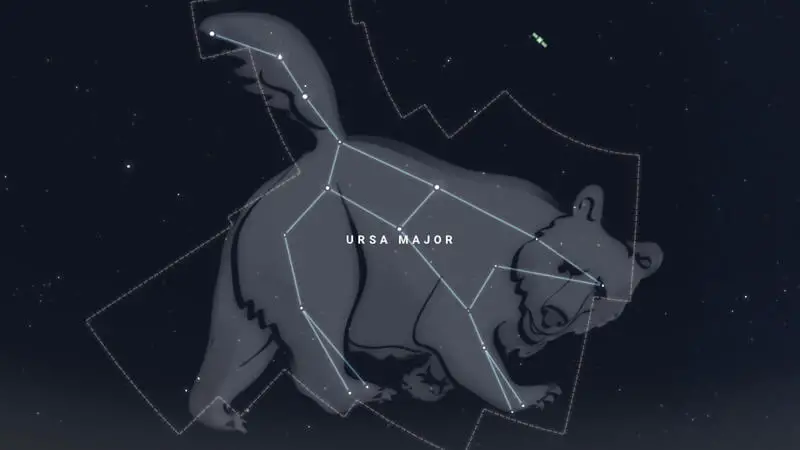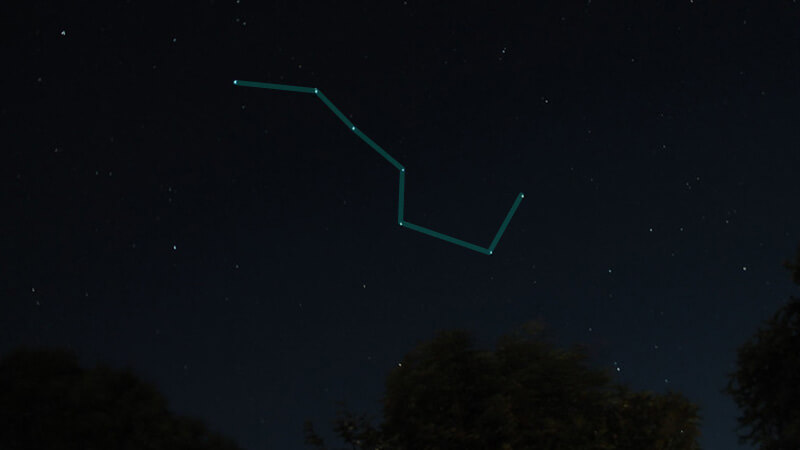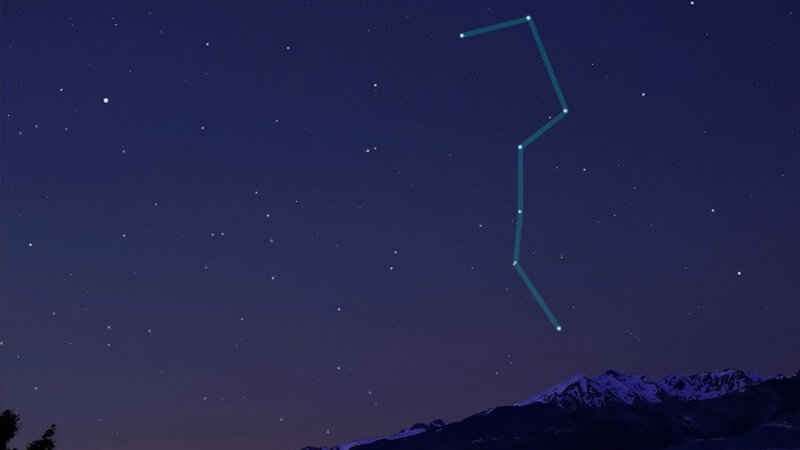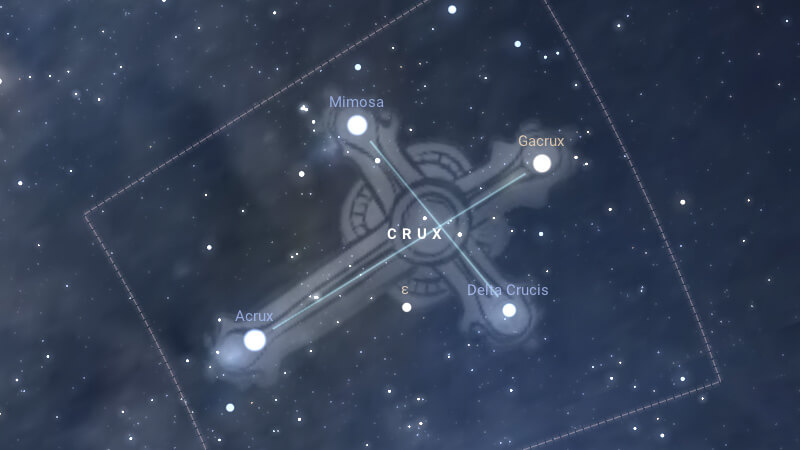When you gaze up at the night sky, have you ever wondered if everyone on Earth can see the same constellations? The Big Dipper is one of the most famous star patterns you might have seen. It’s an easily recognizable group of stars that many people in the Northern Hemisphere can spot on a clear night.
Getting to know the Big Dipper can be an exciting and educational experience. It can help you navigate the stars and feel more connected to the universe around you. As you’re looking up at the night sky, think of other stargazers like you, who might be curious about which constellations they can see from their location on Earth.
So, can everyone on Earth see the Big Dipper? The answer is no. The Big Dipper is a far northern asterism, meaning it’s visible only to people in the Northern Hemisphere and a few lucky folks in the Southern Hemisphere who aren’t too far south. Those living farther south on our planet might feel left out when viewing this well-known cluster of stars.
In this article, you get
A closer look at the Big Dipper Asterism
A breakdown and description of the stars that make up the Big Dipper
Tips on how best to observe the Big Dipper
Alternatives for our friends in the Southern Hemisphere
Answers to frequently asked questions
By the end of this article, you’ll have all the info you need about observing the Big Dipper and more.
Let’s dive right in.
Recommended For You
Understanding the Big Dipper

Asterism Definition
Like the Big Dipper, an asterism is a pattern of stars that you can easily recognize in the night sky. It’s different from a constellation, a larger, officially recognized group of stars.
When you look up at the sky, you can use the Big Dipper asterism to help find nearby constellations, like Ursa Major.
The Big Dipper is part of Ursa Major, the Great Bear, but isn’t the whole constellation itself.
Components of the Big Dipper

What does the Big Dipper look like?
The Big Dipper consists of seven bright stars that form the shape of a large ladle or Dipper.
Here are the Big Dipper stars:
- Alkaid
- Mizar
- Alioth
- Megrez
- Phecda
- Merak
- Dubhe
When can you see the big dipper? You can spot the Big Dipper if you stand in a dark spot on a clear night.
As you look at the Big Dipper, imagine a line connecting the two stars at the edge of the “bowl” – Merak and Dubhe. Extend that line, and you’ll reach Polaris, the North Star. The North Star is part of the Little Dipper.
So, why can’t everyone on Earth see the Big Dipper?
People living in the Northern Hemisphere have the best view.
If you’re in the Southern Hemisphere, you might still catch a glimpse from around 26 degrees south latitude during the right time of year and at the correct hour of the night.
The further south you go, the harder it’ll be to see the Big Dipper.
But don’t worry. There are plenty of other beautiful sky wonders to explore wherever you are!
Visibility Around the Globe

Hemisphere and Latitude Differences
Can you always see the Big Dipper?
When it comes to spotting the Big Dipper, where you are on Earth matters.
In the Northern Hemisphere, it’s visible almost every clear night.
You can see the entire formation if you live within 90° latitude of the constellation’s stars (49° N to 62° N).
Can you see the Big Dipper in the Southern Hemisphere?
In Southern Hemisphere, though, you’re out of luck. The Big Dipper never rises above the horizon. Go out on a starry night and explore other constellations instead, like the Southern Cross (more on that below).
Seasonal Variations
The Big Dipper’s visibility mostly stays the same throughout the year in the Northern Hemisphere. Since it is circumpolar, it appears to rotate slowly counterclockwise around the north celestial pole. Sometimes, the Big Dipper will appear upside down.
You can enjoy its presence during all four seasons.
Urban Light Pollution

City lights can make it harder to see the Big Dipper, especially if you live in a densely populated area.
To enhance your stargazing experience, try these tips:
- Find a spot away from streetlights and buildings.
- Give your eyes 15-20 minutes to adjust to the darkness.
- Use a stargazing app to help locate the constellation.
Now that you know how the Big Dipper’s visibility varies, enjoy clear nights and this magnificent star formation.
FREE STARGAZING CHECKLIST
My 5-page Stargazing Checklist will enhance your astronomical observations.
Follow this free checklist to navigate the night sky with confidence, clarity, and a sense of preparedness for a rewarding stargazing experience.

Similar Sky Phenomenons
You might be wondering if there are other sky phenomena similar to the Big Dipper that different people on Earth can see. Let’s explore two of them: the Southern Cross and the Orion Constellation.
Southern Cross

For folks living in the Southern Hemisphere, the Southern Cross, also called Crux, is a famous constellation. Like how you’d use the Big Dipper to find the North Star, the Southern Cross helps you find the south celestial pole.
Picture a kite-shaped formation of four bright stars, with two nearby pointer stars guiding you.
Try this trick: Draw an imaginary line from the top of the kite to the bottom, then extend that line four times its original length. That’s where you’ll find the south celestial pole!
Now, you have a handy tool for navigating under the southern sky.
Orion Constellation

The great hunter Orion is a stunning sight in both the Northern and Southern Hemispheres. Spotting Orion is quite simple. Just search for a row of three stars forming the hunter’s belt. Take a moment to admire the dazzling stars Betelgeuse and Rigel, marking Orion’s shoulders and feet.
Here’s a neat tip:
- Use Orion’s belt to find other dazzling sights in the sky.
- Draw an imaginary line through the belt and follow it to reach the bright star Sirius or the cluster of stars called the Pleiades.
- Remember these star-hopping tips. You’ll be an expert stargazer in no time!
Frequently Asked Questions
Can everyone on Earth see the Big Dipper?
Not everyone can see the Big Dipper, sadly. If you live in the Northern Hemisphere, you’re in luck! It’s visible almost every clear night. Is the big dipper visible in the southern hemisphere? The Big Dipper stays hidden from view if you live in the Southern Hemisphere.
How do I find the Big Dipper in the night sky?
Finding the Big Dipper is super easy! First, figure out which way is North. You can use a compass or a map. Then, tilt your head back and look at the sky at about a 45-degree angle.
The Big Dipper might be closer to the horizon, depending on the time of year, so don’t look up too high. Once you see it, you won’t be able to unsee it. Now, you can use it to find North without a map or compass.
Why is the Big Dipper important?
The Big Dipper is important because it helps us find North. Since it’s a circumpolar group of stars, it’s always visible in the Northern Hemisphere. So, if you’re lost in the woods or just getting into stargazing, the Big Dipper can be your trusty guide.
What’s the difference between the Big Dipper and the Little Dipper?
The Big Dipper is larger and easier to spot than the Little Dipper. The Little Dipper can be shy, but you can find it using the Big Dipper! The two stars at the end of the Big Dipper’s “bowl” point to Polaris, the North Star, at the end of the Little Dipper’s handle.
What’s the story behind the Big Dipper?
The Big Dipper is part of a larger constellation called Ursa Major, which means “Great Bear.” In ancient times, people used to tell stories about how this giant bear ended up in the sky. Different cultures had their own versions of the story, but they all shared a love for these bright and easy-to-find stars.
Where can the big dipper be seen?
You can see the Big Dipper in the night sky from the northern hemisphere throughout the year. Its visibility depends on your location and the time of the night. It forms one of the most recognizable constellations and is part of the larger Ursa Major constellation. To locate the Big Dipper, simply look toward the northern part of the sky. Its distinctive shape resembles a large ladle or dipper, making it relatively easy to spot even in areas with some light pollution.
Can you see orion and the big dipper at the same time?
Yes, you can see Orion and the Big Dipper at the same time in the night sky, but their visibility depends on your location and the time of year. Orion typically becomes visible in the late fall and early winter, rising in the eastern sky, while the Big Dipper remains visible in the northern part of the sky year-round in the northern hemisphere.
Summary: big dipper constellation
Thank you for reading my article “Can everyone on Earth see the Big Dipper?”
The Big Dipper and the Little Dipper hold a special place. While discussing the visibility of the Big Dipper, it’s important to acknowledge its diminutive counterpart, the Little Dipper, which is part of the Ursa Minor constellation. The Big Dipper is a prominent and recognizable constellation, often visible throughout the year from the northern hemisphere, and the Little Dipper accompanies it in the celestial panorama. The visibility of the Little Dipper and Big Dipper can be influenced by factors such as location and the time of year.
You’ve learned that the Big Dipper is visible in most of the Northern Hemisphere and is a recognizable group of stars that many cultures know. As you gaze up at the night sky, remember that this famous asterism appears to rotate counterclockwise due to Earth’s rotation.
While you might feel lucky to live in an area where the Big Dipper is visible year-round, only some on Earth share this view. So, be sure to appreciate the beauty of the stars and share this experience with your friends and family, sparking their interest in astronomy as well.
Here’s a tip: next time you’re stargazing, use the Big Dipper as a guide to find the North Star Polaris. This star has been a vital navigation tool for centuries and is still important today. Just follow the two stars that form the outer edge of the “bowl” upward, and there you’ll find the North Star!
Remember, you don’t need to be an astronomy expert to enjoy the night sky. Keep exploring and learning about the fascinating wonders above us. Who knows? You might even make a stellar discovery that’ll change how we see the universe.
So, go ahead and share your newfound knowledge about the Big Dipper and inspire curiosity in those around you. Together, we can all take a moment to appreciate the beauty, mystery, and vastness of the cosmos.
Additional articles you may enjoy in my Big Dipper series:




